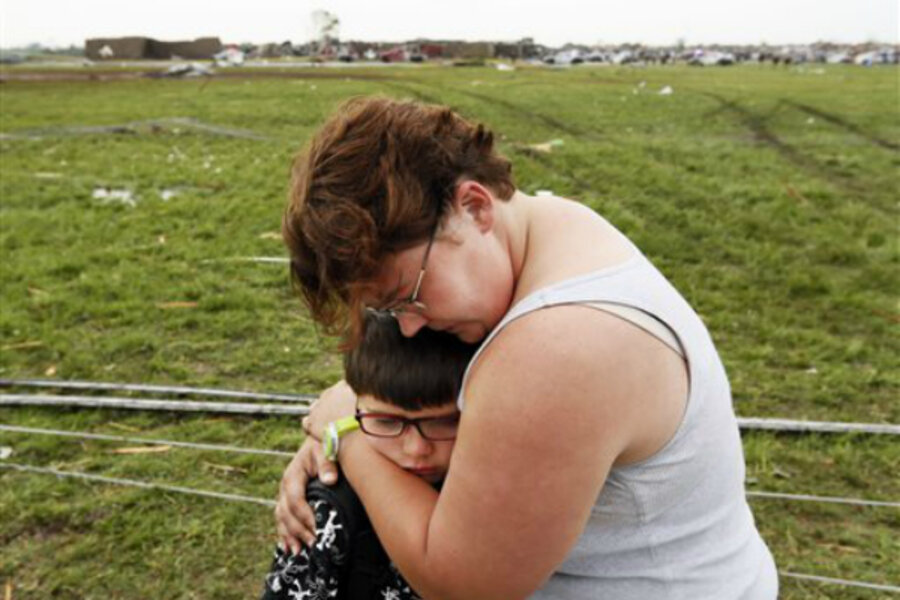Some families reunited after Okla. tornado, others wait in worry
Loading...
| Moore, Okla.
The parents and guardians stood in the muddy grass outside a suburban Oklahoma City church, listening as someone with a bullhorn called out the names of children who were being dropped off — survivors of a deadly tornado that barreled through their community.
For many families, the ordeal ended in bear hugs and tears of joy as loved ones reunited. Others were left to wait in the darkness, hoping for good news while fearing the worst.
At least 20 children are among the more than 50 reported dead so far in Moore, the Oklahoma City suburb ravaged by Monday's tornado that packed winds of up to 200 mph. The twister reduced one elementary school to a heaping mound of rubble and heavily damaged another while also flattening block after block of homes. Officials said early Tuesday the death toll could rise by as many as 40.
At St. Andrews United Methodist Church, parents stared into the distance as they waited, some holding the hands of young children who were missing siblings.
Tonya Sharp and Deanna Wallace sat at a table in the church's gymnasium waiting for their teenage daughters. As Sharp and Wallace spoke, a line of students walked in.
Wallace spotted her 16-year-old daughter, who came quickly her way and jumped into her mother's arms, pushing her several steps backward in the process. But Sharp didn't see her daughter, a 17-year-old who has epilepsy. She worried her daughter hadn't taken her medicine.
"I don't know where she's at," Sharp said. Later, she went to speak to officials who helped her register so she could be notified as soon as her daughter was found.
Shelli Smith had to walk miles to find her children. She was reunited with her 14-year-old daughter, Tiauna, around 5 p.m. Monday, but hadn't yet seen her 16-year-old son, TJ, since he left for school that morning.
TJ's phone had died, but he borrowed a classmate's phone to tell his mother where he was. However, Smith couldn't get to him due to the roadblocks. So she parked her car and started walking.
It took her three hours, but a little after sunset, she found him. She grabbed her son and squeezed him in a tight hug that lasted for several seconds before letting go. TJ hugged his sister, and then hugged his mom again.
The family had a long walk back to their car and then home, but she said she didn't mind.
"I was trying to get him and they wouldn't let me," she said, adding later: "I was like, 'You know what? I'm going to get my son.'"
Renee Lee summed up the struggle for many parents with multiple children — find the ones who they hadn't yet seen, while calming the younger ones they had with them.
Lee is the mother of two daughters Sydney Walker, 16, and Hannah Lee, 8. When the storm came, she tried to pick Sydney up from school. Sydney told her on the phone that they wouldn't let her come in. While Lee and her younger daughter waited in their home, which wasn't hit, Sydney was safe in the room at a local high school.
Lee said she believed Sydney wasn't hurt and seemed resigned to the severe weather outbreaks.
"There's been so many of them, it doesn't even faze me," she said. "You just do what you gotta do. It's part of living here."







